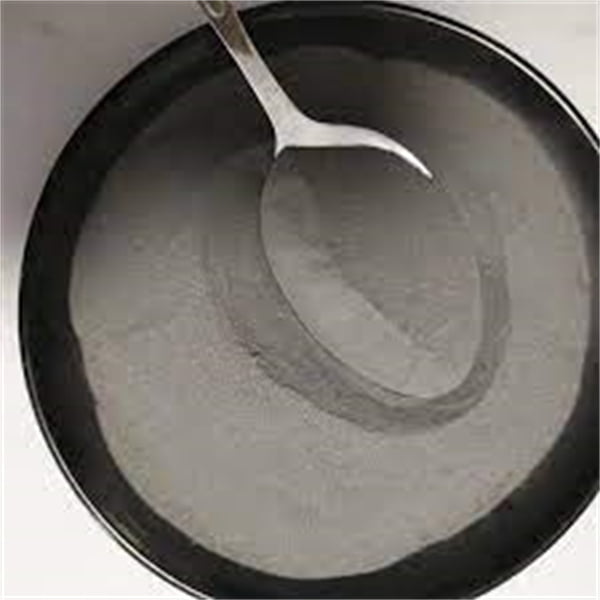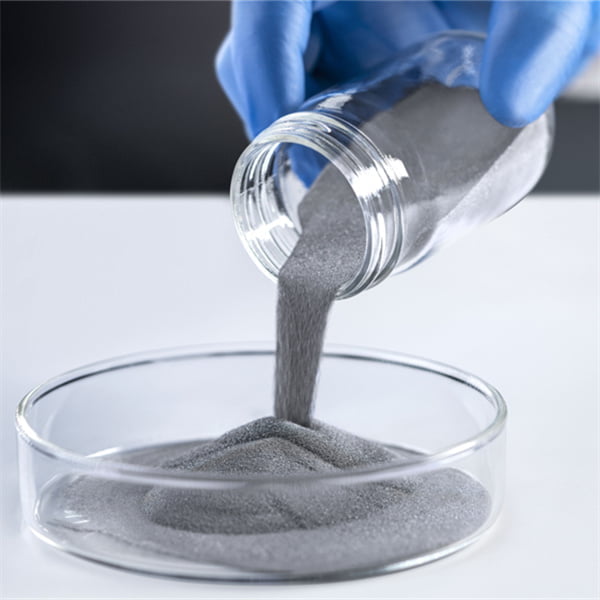výhody tryskání pojiva
Obsah
Tryskání pojiva, revoluční technologie 3D tisku, rychle mění výrobní prostředí. Představte si proces, který přivádí k životu složité kovové díly vysokou rychlostí, s minimálním odpadem a širší paletou materiálů než kdykoli předtím. Takové je kouzlo pojivového tisku a tento komplexní průvodce se zabývá jeho četnými výhodami, zkoumá různé možnosti kovových prášků a odpovídá na všechny vaše palčivé otázky.
Tryskání pojiva: Technický ponor do hloubky
Tryskání pojiva funguje na překvapivě jednoduchém, ale účinném principu. Na plošinu se rozprostře vrstva jemného kovového prášku. Poté tisková hlava selektivně vystříkne na prášek pojivo, které spojí částice dohromady a definuje geometrii dílu. Vrstvu po vrstvě se objekt vytvaruje, obklopen nevázaným práškem, který funguje jako přirozená podpora. Po tisku se nespojený prášek odstraní a díl projde dalšími procesy, jako je infiltrace (vyplnění pórů kovem) a spékání (tavení částic), aby se dosáhlo jeho konečných vlastností.

Výhody tryskání pojiva
Binder jetting se může pochlubit přesvědčivým seznamem výhod, které z něj dělají lídra v závodě o 3D tisk. Prozkoumejme některé z nejvýznamnějších výhod:
- Rychlost tisku v pojivu je vysoká: V porovnání s jinými metodami aditivní výroby kovů, jako je laserové spékání, vyniká tryskání pojiva rychlostí. Jeho jednoprůchodová technologie tisku umožňuje vytvořit stovky kovových dílů za den, což výrazně zrychluje výrobní časy.
Představte si, jaké důsledky to bude mít pro odvětví, jako je letecký a automobilový průmysl, kde je rychlá výroba prototypů a malosériová výroba klíčová. Tryskání pojivem zkracuje dodací lhůty, což společnostem umožňuje rychleji uvádět výrobky na trh a pružněji reagovat na měnící se požadavky trhu.
- Náklady na tryskání pojiva jsou nízké: Tryskání pojivem nabízí nákladově efektivní přístup k 3D tisku z kovu. Zde je důvod:
- Snížení množství materiálového odpadu: Na rozdíl od jiných technik, které vyžadují podpůrné konstrukce, se při tryskání pojivem využívá nevázané lože prášku jako přirozená podpora. Tím se minimalizuje materiálový odpad, který je významným nákladovým faktorem při aditivní výrobě kovů.
- Zjednodušený proces: Tryskání pojiva zahrnuje méně kroků zpracování ve srovnání s jinými metodami, což vede ke snížení celkových výrobních nákladů.
Přemýšlejte o tom takto. Při tryskání do pojiva netisknete jen díly, ale také efektivitu. Snížení množství odpadu a zefektivnění procesů vede k výrazným úsporám nákladů, což činí z binder jettingu atraktivní volbu pro společnosti, které se snaží optimalizovat své výrobní rozpočty.
- Tryskání pojivem nabízí širokou škálu možností výběru materiálu: Jedním z nejzajímavějších aspektů tryskání pojivem je jeho všestrannost, pokud jde o materiály. Na rozdíl od laserových metod, které mají s některými materiály potíže kvůli vysokým nárokům na teplo, pracuje tryskání pojivem při pokojové teplotě. To otevírá dveře k širšímu výběru materiálů, včetně:
- Nerezová ocel: Oblíbená volba pro svou vynikající odolnost proti korozi a mechanické vlastnosti. Tryskání pojivem umožňuje vytvářet složité díly z nerezové oceli pro aplikace od lékařských implantátů až po průmyslové komponenty.
- Inconel: Inconel je proslulý svou pevností při vysokých teplotách a odolností vůči drsným podmínkám a je ideální pro díly používané v proudových motorech, turbínách a dalších náročných aplikacích.
- Nástrojová ocel: Tryskání pojivem umožňuje výrobu složitých dílů z nástrojové oceli s dobrou odolností proti opotřebení, které jsou ideální pro formy, zápustky a řezné nástroje.
- Měď: Tento vysoce vodivý kov nachází uplatnění ve výměnících tepla, elektrických součástkách a dalších materiálech. Tryskání pojivem otevírá dveře k vytváření složitých měděných dílů s vynikající vodivostí.
- Hliník: Hliník je známý svými lehkými a zároveň pevnými vlastnostmi a je cenným materiálem pro letectví, automobilový průmysl a spotřební zboží. Tryskání pojivem umožňuje vytvářet složité hliníkové díly s vynikajícím poměrem hmotnosti a pevnosti.
- Titan: Titan je biokompatibilní a vysoce pevný kov, který se hojně používá v lékařských implantátech a leteckých součástkách. Tryskání pojiva usnadňuje výrobu složitých titanových dílů pro náročné aplikace.
Tento rozmanitý výběr materiálů umožňuje konstruktérům a inženýrům vytvářet díly s dokonalými vlastnostmi pro jejich specifické potřeby. Již nejsou omezováni tradičními výrobními metodami.
- Velikost tisku Binder Jetting je velká: Systémy pro tryskání pojivem mohou pojmout velké objemy, což umožňuje výrobu velkých kovových dílů v jednom tiskovém cyklu. Tím odpadá nutnost složitých montážních procesů a zkracuje se celková doba výroby.
Představte si možnosti pro odvětví, jako je stavebnictví a stavba lodí. Tryskáním pojiva lze vytvářet velké, jednodílné součásti, což zefektivňuje výrobní proces a potenciálně vede k lehčím a robustnějším konstrukcím.
Kromě výhod: Úvahy pro Tryskání pojiva
Přestože tryskání pojivem nabízí řadu přesvědčivých výhod, je nutné zvážit některé faktory, než se do něj vrhnete po hlavě:
- Požadavky na následné zpracování: Součásti tryskané pojivem obvykle vyžadují další kroky následného zpracování, jako je infiltrace a spékání, aby bylo dosaženo jejich konečných vlastností. Tyto kroky mohou zvýšit celkovou dobu výroby a náklady.
- Povrchová úprava dílu: Díly tryskané pojivem mohou mít mírně drsnější povrch ve srovnání s díly vyrobenými jinými metodami, např. obráběním. To může vyžadovat další dokončovací procesy v závislosti na aplikaci.
- Vlastnosti materiálu: Vlastnosti dílů tryskaných pojivem nemusí být vždy totožné s vlastnostmi tradičně vyráběných dílů, a to kvůli faktorům, jako je pórovitost a velikost zrn. Je nezbytné pečlivě vyhodnotit vlastnosti materiálu, aby bylo zajištěno, že splňují požadavky aplikace.
Tryskání pojiva vs. jiné metody aditivní výroby kovů
Zde je rychlé srovnání tryskání pojiva s jinými oblíbenými metodami aditivní výroby kovů:
| Vlastnosti | Tryskání pojiva | Laserové spékání (SLM) | Tavení elektronovým paprskem (EBM) |
|---|---|---|---|
| Rychlost | Nejrychlejší | Mírný | Mírný |
| Náklady | Nízká až střední | Mírná až vysoká | Vysoký |
| Výběr materiálu | Wide | Omezené (materiály s vysokým bodem tání) | Omezené (materiály s vysokým bodem tání) |
| Objem sestavení | Velké | Mírný | Mírný |
| Povrchová úprava | Mírný | Dobrý | Vynikající |
| Následné zpracování | Požadované | Požadované | Požadované |
FAQ
Otázka: Jaká jsou omezení tryskání pojiva?
Odpověď: Jak již bylo řečeno, tryskání pojiva zahrnuje kroky následného zpracování, které mohou zvýšit čas a náklady. Kromě toho mohou vlastnosti povrchu a materiálu vyžadovat další úvahy v závislosti na aplikaci.
Otázka: Je tryskání pojiva vhodné pro hromadnou výrobu?
Odpověď: Tryskání pojivem vyniká při nízkoobjemové až středněobjemové výrobě. Díky vysoké rychlosti a schopnosti tisknout více dílů současně je pro tyto scénáře ideální. Zatímco pro skutečnou hromadnou výrobu jsou vhodnější tradiční metody, binder jetting se neustále vyvíjí a v budoucnu by mohl hrát roli v hromadné výrobě.
Otázka: Jaké jsou některé z nových aplikací tryskání pojiva?
Odpověď: Tryskání pojiv neustále posouvá hranice a nachází uplatnění v nových a zajímavých oblastech. Zde je několik příkladů:
- Hromadná výroba na míru: Schopnost tryskání pojivem vytvářet složité geometrie při vysokých rychlostech jej předurčuje k výrobě dílů na míru v rámci hromadné výroby. Představte si personalizované sportovní vybavení, lékařské implantáty šité na míru jednotlivým pacientům nebo spotřební elektroniku s jedinečnými vlastnostmi - to vše se efektivně vyrábí pomocí binder jettingu.
- Aditivní výroba nástrojů: Pomocí tryskání pojiva lze vytvářet složité nástrojové destičky a přípravky za zlomek času a nákladů ve srovnání s tradičními výrobními metodami. To umožňuje rychlou tvorbu prototypů nástrojů a usnadňuje výrobu nástrojů na vyžádání, což vede ke zvýšení flexibility a zkrácení dodacích lhůt ve výrobních procesech.
- Výzkum vesmíru: Díky nízké hmotnosti a vysoké pevnosti dosažitelné pomocí tryskání pojiva je ideální pro výrobu komponentů pro kosmické lodě a satelity. Možnost tisku složitých geometrií navíc otevírá dveře pro vývoj nových zařízení pro kosmický výzkum.
- Ochrana kulturního dědictví: Pomocí tryskání na pojivo lze reprodukovat historické artefakty a sochy s neuvěřitelnými detaily. Tato technologie má potenciál revolučně změnit způsob, jakým uchováváme kulturní dědictví, a zpřístupnit historické artefakty pro studium a vzdělávání.

Budoucnost tryskání pojiva: Společné úsilí
Budoucnost tryskání pojivem je jasná, ale vyžaduje spolupráci různých zúčastněných stran. Zde je to, co můžeme očekávat:
- Pokroky v materiálové vědě: Vývoj nových kovových prášků speciálně optimalizovaných pro tryskání pojivem uvolní ještě větší potenciál z hlediska vlastností materiálu a tisknutelnosti.
- Vylepšené techniky následného zpracování: Zjednodušení a případná automatizace následných kroků zpracování, jako je infiltrace a slinování, dále zkrátí výrobní čas a sníží náklady, čímž se tryskání pojiva stane ještě konkurenceschopnějším.
- Vylepšení softwaru: Pokrok v softwaru pro 3D tisk umožní optimalizovat parametry tisku a podpůrné struktury pro tryskání pojiva, což povede ke zlepšení kvality a konzistence dílů.
- Širší přijetí a integrace: Vzhledem k tomu, že tato technologie dozrává a její výhody jsou stále více uznávány, je tryskání pojivem připraveno na významný růst v různých průmyslových odvětvích. Můžeme očekávat větší integraci tryskání pojiv do stávajících výrobních postupů, což povede k agilnější a efektivnější výrobě.
Závěrem
Tryskání pojiva není jen metoda aditivní výroby kovů, ale transformační technologie, která je připravena změnit výrobní prostředí. Její jedinečná kombinace rychlosti, cenové dostupnosti a materiálové univerzálnosti z ní činí přesvědčivou volbu pro širokou škálu aplikací. Vzhledem k tomu, že se tato technologie dále vyvíjí a překonává svá omezení, má tryskání pojivem potenciál způsobit revoluci v navrhování, vývoji a výrobě kovových dílů. Připoutejte se a připravte se na vzrušující jízdu, kterou binder jetting slibuje!
Sdílet na
MET3DP Technology Co., LTD je předním poskytovatelem řešení aditivní výroby se sídlem v Qingdao v Číně. Naše společnost se specializuje na zařízení pro 3D tisk a vysoce výkonné kovové prášky pro průmyslové aplikace.
Dotaz k získání nejlepší ceny a přizpůsobeného řešení pro vaše podnikání!
Související články

Vysoce výkonné segmenty lopatek trysek: Revoluce v účinnosti turbín díky 3D tisku z kovu
Přečtěte si více "O Met3DP
Nedávná aktualizace
Náš produkt
KONTAKTUJTE NÁS
Nějaké otázky? Pošlete nám zprávu hned teď! Po obdržení vaší zprávy obsloužíme vaši žádost s celým týmem.

Kovové prášky pro 3D tisk a aditivní výrobu
SPOLEČNOST
PRODUKT
kontaktní informace
- Město Qingdao, Shandong, Čína
- [email protected]
- [email protected]
- +86 19116340731
















